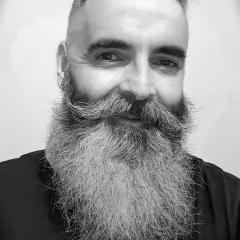AS 1194 Accuracy
-
Recently Browsing
- No registered users viewing this page.
-
Topics
-
Posts
-
Ah, well there is the rub. I ordered a post and oscillating weight, but clicked on the wrong thing when adding the weight to the basket adding an automatic bridge. Ordered a weight, and it's somewhere in the ether after our customs and excise folks rejected it because of the documentation. Yes, both springs inserted the same. "Is the idler gear ok", and here's why I posted to the newbie area: So, reading between the lines, and again correct me if I'm wrong here, the automatic winding mechanism will have an ideler gear, along with the reverse wheels, that prevents over-winding? There is nothing (that I'm aware of) between the crown pinion, crown wheel, and the ratchet wheels to prevent over-winding other than the mainsprings slipping in the barrels. This is only the second automatic I've worked on. The other, a Vostok, had a very obvious mechanism. I shall look at the automatic winding mechanism in a bit more detail when I've a bit more time. At the moment I'm taking a glance here now and then when work is dragging 😉 As ever, thank you for your help. Always appreciated.
-
If the weight was worn how does the post look as normally you'd have to replace both. There should be no real resistance at the end and just be able to keep on winding. Did you insert both springs the same and is the idler gear OK.
-
Assembled and running well, I'm asking after the fact. I'm waiting on a new oscillating weight as this one was worn (they have a reputation for it apparently, no bearings). So I've been winding it by hand, but meeting quite a bit of resistance at the end, more than I think an automatic weight will overcome. It's not quite as sudden as a manual mechanism, but there's very little in it, certainly enough that I would be concerned about breaking something if I continued.
-
Remove the cannon pinion from the dial side first. The "clip" you describe is sort of a metal tab some American companies designed their cannon pinions with in order to make it easier to tighten friction. If that is the problem, the solution is as simple as gently squeezing the tab with tweezers to bend it ever so slightly inward, while supporting the inside of the cannon pinion if possible (it may be harder to support inside since it does not have an open tip as a hollow tube) The cannon pinion should just pull straight off of the arbor on the dial side if you pull it straight up with tweezers. There's no jewel in danger of breaking and the arbor is thick so there isn't much risk of breaking the arbor. But when you are describing that the center wheel's pinion is not turning the arbor, is the pinion firmly attached to the center wheel? If you remove the center wheel and hold onto the rim of the wheel, does the pinion turn independently of the rest of the wheel? It should not. I'm not sure if this was the case on older Waltham, but the pinion may be threaded onto the center wheel arbor and they are often loose. This was a safety mechanism for a broken mainspring and may just need to be tightened back down. I can't remember for sure, but these might be a reverse (left) thread instead of normal right. And does the entire arbor turn independently of the wheel? Also should not.
-
You may get some extra friction on the barrel lid so may not slip as easy but I wouldn't think it's a problem. My suggestion would be to finish the assembly and see how it runs.
-





Recommended Posts